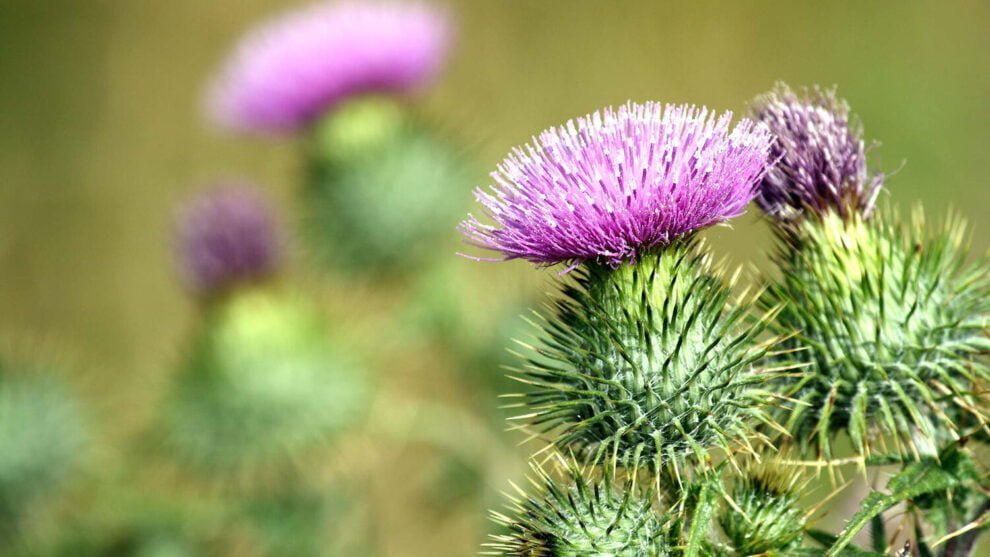The thistle is the flower of Scotland and one of its most recognisable symbols. Since King Alexander III, it has been Scotland’s national emblem.
A Legendary Story
No-one is truly sure of how the thistle came to be Scotland’s national flower. A well-known story though attributes the thistle being chosen as the emblem of Scotland to the Battle of Largs (a coastal town in Ayrshire) in the 13th century. A Norse army journeyed to Scotland, intent on conquering the land. The legend has it that they left their ships under cover of night, and were planning to ambush the sleeping Scottish Clansmen. In order to be as quiet as possible, the Norsemen had removed their shoes. However as they crept across the countryside, one of them stepped onto a thorny thistle. His cry of pain roused the Scots, and the warriors rose up and defeated the invaders.
History
Silver coins in Scotland and later Britain have long featured a thistle, and the first coins to do so were as early as 1474, issued by King James III in Scotland.The most recent design to feature the thistle plant was the British 5p coin (which stopped being minted in 2008), which was impressed with ‘The Badge of Scotland, a thistle royally crowned’.
In 1687 King James VII and II founded the Order of the Thistle. Its heraldic emblem was, of course, the thistle. Its full title is the Most Ancient and Most Noble Order of the Thistle, and it is an order of chivalry, the highest honour Scotland can bestow on an individual. The motto of the Order, Nemo me impune lacessit, ‘No one provokes me with impunity’, pairs well with the prickly thistle which cannot be picked without difficulty.
The symbol of the thistle can also be seen in combination with other national flowers and symbols. Below is a flag gifted to Falkland Palace in 1950, to mark the 300-year history of the Scots Guards. The emblem represents the Crown and the rank of Colonel, showing the Scottish thistle, English rose and Irish shamrock with the words Unita Fortior, ‘stronger in unity’. The military colours were presented to George VI when he was Colonel-in-Chief of the Scots Guards from 1932–7.
Source: National Trust for Scotland











